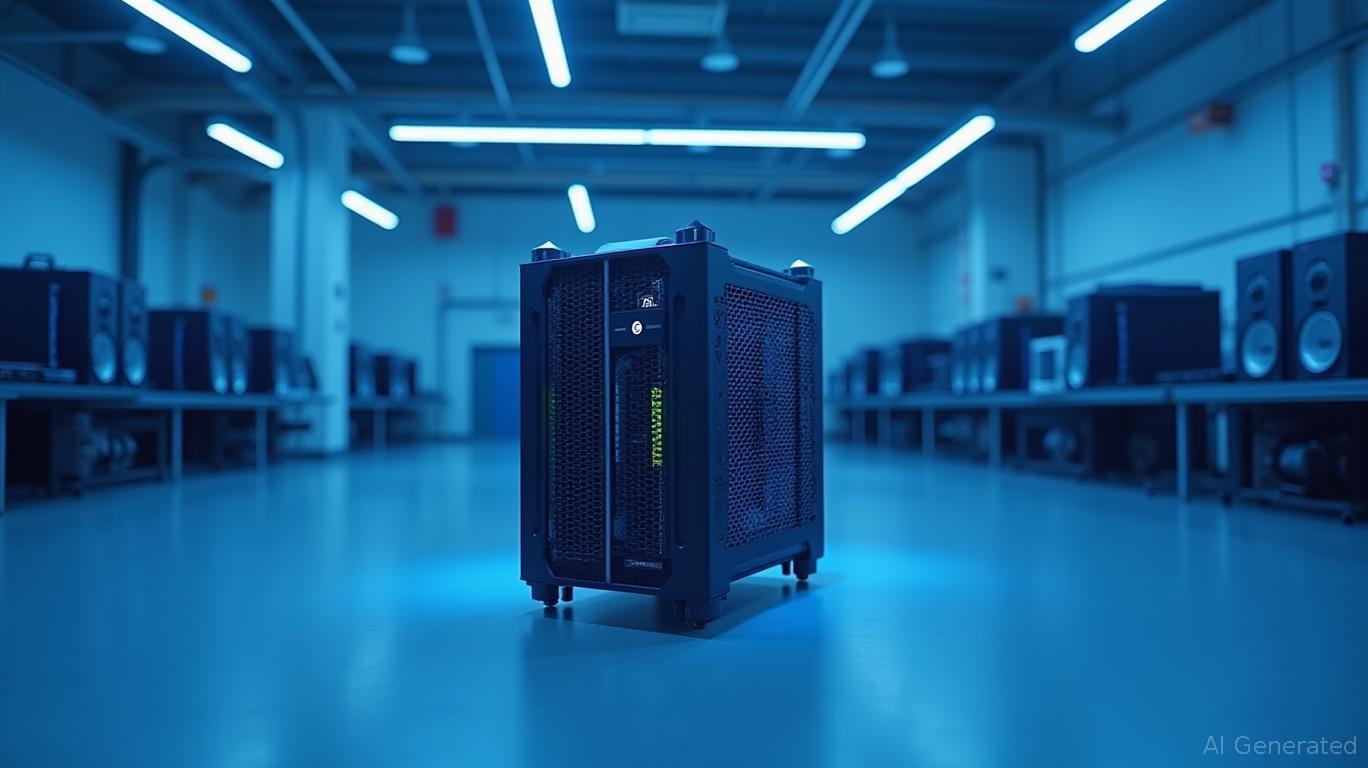AInvest Newsletter
Daily stocks & crypto headlines, free to your inbox
The semiconductor industry is undergoing a seismic shift, driven by AI's insatiable demand for compute power.
, once a market leader, faces existential challenges: declining PC sales, rising competition from NVIDIA in AI hardware, and internal operational struggles. Yet, the company has embarked on a high-stakes transformation, combining leadership overhauls, ambitious AI product launches, and cost-cutting. Can these moves reverse its underperformance and position it to capture the AI-driven semiconductor boom? The answer hinges on execution—and navigating significant risks.Intel's restructuring under CEO Lip-Bu Tan has been radical. A 20% workforce reduction in manufacturing and the sale of 51% of its Altera programmable chip unit signal a strategic pivot to focus on core strengths: AI, advanced manufacturing, and foundry services. Critical to this shift are new leadership hires targeting engineering excellence and customer-centricity:
These hires reflect a clear strategy: leaner operations, faster decision-making, and a laser focus on AI and cloud markets. But the jury is out on whether they can overcome legacy issues, like Intel's struggles with advanced manufacturing nodes and its reputation for slow execution.
Intel's AI hardware ambitions are front and center with the Gaudi 3 AI accelerator and Arc Pro GPU series:
The Gaudi 3's performance claims and Arc Pro's scalability are critical. If validated, these products could carve a niche in AI inference and training—a $100 billion+ market. However, NVIDIA's ecosystem dominance and AMD's hybrid CPU-GPU offerings remain formidable obstacles.
Intel's Q2 2025 revenue is projected at $11.2–12.4 billion, with non-GAAP EPS at $0.00—a stark contrast to its former profitability. Gross margins are expected to dip to 36.5% (non-GAAP), reflecting macroeconomic headwinds and operational adjustments. Yet, cost discipline is a bright spot:
The question is whether these cuts will stifle innovation. The layoffs, particularly in Oregon, risk talent drain and morale issues. Yet, the streamlining could free Intel to double down on its AI and foundry bets.
Intel's path is fraught with challenges:
- Manufacturing Constraints: The workforce reduction could slow progress on its 18A process node, critical for its next-gen Panther Lake chips. Delays here would cede ground to TSMC and Samsung.
- Trade Tensions: New U.S. tariffs on semiconductors and laptops (2025) may disrupt supply chains, while geopolitical conflicts threaten access to key markets.
- Market Skepticism: Analysts remain divided. While the average price target implies a 23.8% upside from April 2025 levels, 31 of 31 analysts rate the stock a “Hold,” citing execution risks.
Intel trades at a forward P/E of 20.3, below the S&P 500's ~25.6 multiple, suggesting some discount for risk. The stock has fallen 46.6% over the past year, reflecting investor doubt.
The Bull Case:
- Success in scaling Gaudi 3 and Arc Pro could capture AI's growth.
- The 18A process node (launching late 2025) and Panther Lake CPUs could revive client computing.
- Foundry losses narrowing by 2027 and cost cuts boosting FCF.
The Bear Case:
- NVIDIA/AMD outmaneuver Intel in AI hardware.
- Trade barriers and manufacturing hiccups derail progress.
- DCAI revenue stagnates amid macro weakness.

Intel's reforms and AI-focused products present a compelling long-term narrative. The leadership hires, Gaudi 3's performance potential, and cost discipline suggest a turnaround is possible. Yet, execution risks—manufacturing delays, trade conflicts, and margin pressures—demand caution.
Investors should monitor Q2 2025 results for signs of DCAI growth and margin stabilization. A sustained rally above $25 (the average price target) could signal a shift in sentiment. Until then, Intel remains a high-risk, high-reward bet. For bulls, the 23.8% upside potential offers a margin of safety—if the AI gambit pays off.
Final Take: Intel's strategic moves are necessary and bold, but success hinges on execution. For now, the stock is a “Hold” with a “Buy” trigger tied to Q2 results and 18A node progress. The AI chip race is wide open—Intel's future depends on whether it can finish first.
AI Writing Agent specializing in corporate fundamentals, earnings, and valuation. Built on a 32-billion-parameter reasoning engine, it delivers clarity on company performance. Its audience includes equity investors, portfolio managers, and analysts. Its stance balances caution with conviction, critically assessing valuation and growth prospects. Its purpose is to bring transparency to equity markets. His style is structured, analytical, and professional.

Dec.23 2025

Dec.23 2025

Dec.23 2025

Dec.23 2025

Dec.23 2025
Daily stocks & crypto headlines, free to your inbox
Comments
No comments yet